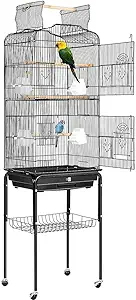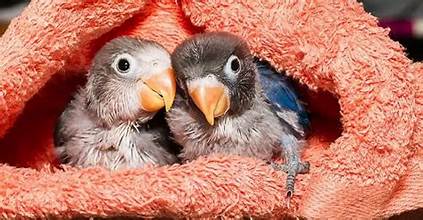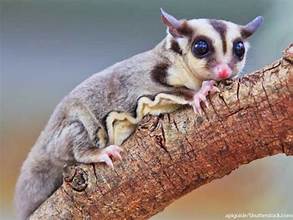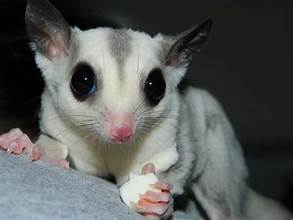Lovebirds are one of the most charming and affectionate parrot species, known for their vibrant colors and strong pair bonds. Despite their small size, lovebirds are full of personality and make excellent pets for those who can commit to their care.
Lovebird Diet: What Do Lovebirds Eat?
A balanced diet is essential for the health and happiness of your lovebird. Here’s what you should include in the daily menu:
Pellets:
High-quality pellets should comprise most of your lovebird’s diet. Pellets are nutritionally balanced and provide essential vitamins and minerals.
Fresh Fruits and Vegetables:
Lovebirds enjoy getting various vegetables and fruits, such as apples, carrots, spinach, and bell peppers. These provide vital nutrients and help keep your bird interested in their food.
Seeds:
While seeds are a natural part of a lovebird’s diet, they should be given in moderation as they are high in fat. Give some seeds to the love birds as a treat or supplement to their pellet-based diet.
Protein Sources:
Offer your lovebird small amounts of cooked eggs, legumes, or tofu for protein, especially during the breeding season.
Calcium Supplements:
Cuttlefish bone or mineral blocks are essential to provide calcium, particularly for females, to prevent egg-binding.
Clean Water:
Clean water should always be available. Change the water daily to prevent contamination.
Lovebird Habitat:
Creating the Perfect Environment
Lovebirds are active and social birds that require a comfortable and stimulating environment:
Cage Size:
A spacious cage is crucial for lovebirds. The minimum size for a single lovebird is 18 x 18 x 24 inches, but more significant is always better. Lovebirds are highly active and need space to fly and play.

Bar Spacing:
Ensure the bar spacing is no more than 0.5 inches to prevent escape or injury.
Perches and Accessories:
Provide multiple perches of varying diameters to keep their feet healthy. Natural wood perches are ideal. Add toys like swings, ladders, and bells to entertain your lovebird.
Cage Location:
Put the cage in a well-lit area, away from direct sunlight and drafts. Lovebirds thrive in environments with stable temperatures.
Bedding and Cleaning:
Line the cage floor with paper towels or bird-safe bedding. Clean the cage and perches regularly to maintain hygiene and prevent disease.
Health Issues:
Common Lovebird Health Concerns
Maintaining your lovebird’s health requires regular observation and proactive care:
Common Health Issues:
Lovebirds can suffer from respiratory infections, feather plucking, psittacosis, and nutritional deficiencies. Watch for symptoms like lethargy, loss of appetite, ruffled feathers, or breathing difficulties.

Regular Vet Visits:
Regular check-ups with an avian veterinarian are essential. Catching causes of health issues can prevent more severe problems.
Diet and Health:
A balanced diet is critical to preventing nutritional deficiencies, which can lead to health problems. Ensure your lovebird’s diet includes a variety of foods to meet all their dietary needs.
Stress Management:
Lovebirds are social creatures that can become stressed if left alone for long periods. Provide plenty of interaction and stimulation to keep them mentally healthy.
Grooming:
Keeping Your Lovebird Clean and Healthy
Grooming is an essential aspect of lovebird care:
Bathing:
Lovebirds enjoy regular baths. Provide a shallow water dish in the cage or mist them with a spray bottle. Bathing helps keep their feathers clean and skin healthy.
Nail Trimming:
Overgrown nails can cause discomfort. Check your lovebird’s nails regularly, trim them if necessary, or have a professional do it.
Beak Care:
Lovebirds’ beaks naturally wear down when chewing and eating, but sometimes, they may need a trim. Provide chew toys and cuttlebones to help maintain beak health.
Feather Care:
Ensure your lovebird’s feathers are smooth and well-kept. If you notice excessive feather plucking or dull feathers, this can signify stress or illness.
Exercise:
Ensuring Your Lovebird Stays Active
Lovebirds are energetic birds that need plenty of exercise to stay healthy:
Out-of-Cage Time:
Allow your lovebird time outside the cage in a safe, enclosed area for flying and exploring. Supervise them closely to prevent accidents.
Interactive Toys:
Provide toys such as swings, ladders, and foraging to encourage physical activity. Change out the toys regularly to keep your bird engaged.

Social Interaction:
Lovebirds are highly social and thrive on interaction. Spend time each day talking to, playing with, and handling your lovebird to keep them mentally and physically stimulated.
Conclusion
Lovebirds are affectionate, lively, and beautiful pets that can bring joy and entertainment to your home. By providing a nutritious diet, spacious habitat, grooming, and plenty of exercise, you can help your lovebird live a long, happy, and healthy life. Lovebirds are a delightful choice whether you’re a new bird owner or adding to your avian family.




